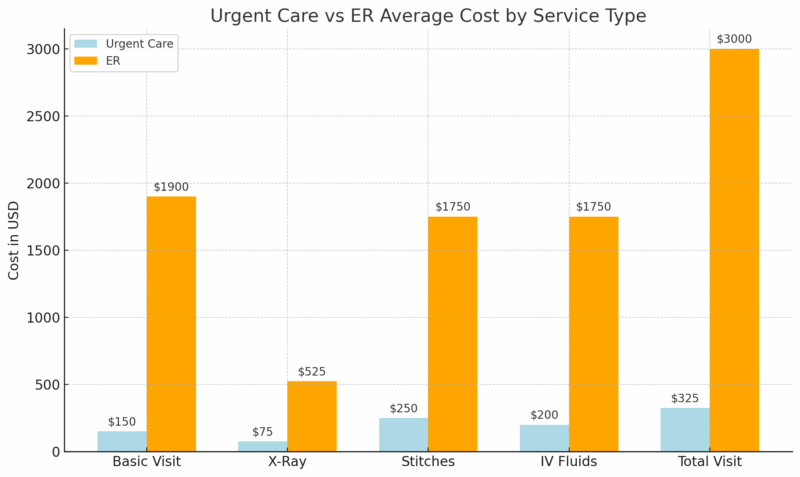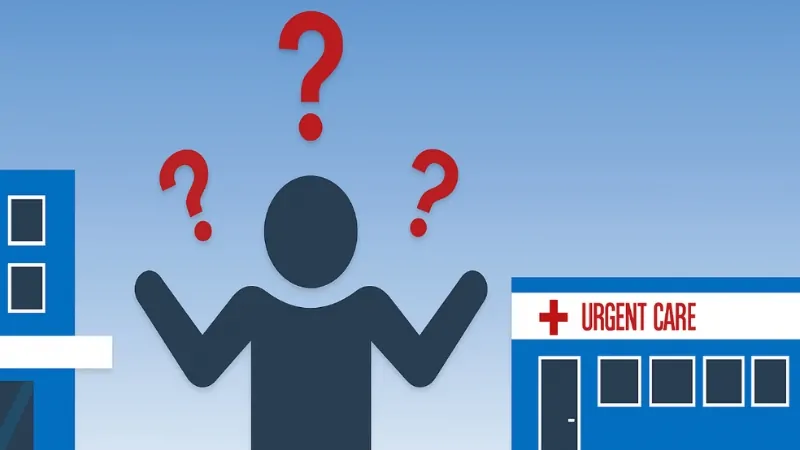Choosing between urgent care and the emergency room creates confusion for many patients. Each option serves a specific purpose, depends on the situation, and comes with major differences in speed, price, and scope of treatment.
Knowing which one fits the health concern helps avoid unnecessary delays, stress, and high medical bills.
Keywords such as urgent care billing services and urgent care billing company continue to appear in healthcare searches due to the rising demand for fast and affordable care.
Companies like ZeeMedicalBilling support clinics in managing those costs by offering specialized services that help patients and centers handle claims more efficiently. With proper billing support, urgent care centers streamline operations and reduce delays tied to paperwork, insurance, and follow-up payments.
Understanding the full scope of care, wait times, and pricing allows families and individuals to make smart choices before seeking treatment. Exploring how each system functions ensures patients receive care at the right place without spending extra time or money.
Table of Contents
ToggleWhat Separates Urgent Care from Emergency Care

Urgent care and emergency care serve distinct functions within the healthcare system. Patients often confuse the two, especially during high-stress moments when symptoms appear quickly and demand immediate attention.
Emergency rooms treat life-threatening conditions, such as chest pain, difficulty breathing, or head trauma.
Urgent care centers handle non-life-threatening issues like minor fractures, infections, rashes, or flu-like symptoms.
Facility Capabilities
Feature
Urgent Care Center
Emergency Room
On-Site Imaging
X-rays only
Full radiology (CT, MRI, Ultrasound)
Staff
Nurse practitioners, general doctors
Emergency physicians, specialists
Equipment
Basic wound and fracture care
Advanced trauma and cardiac support
Open Hours
Extended hours, not 24/7
Open 24/7
Common Conditions by Setting

Urgent Care
Emergency Room
Speed of Service: Wait Times and Patient Flow
Time matters when health issues arise. Speed plays a major role in patient satisfaction and in some cases, survival. Urgent care facilities prioritize low-acuity cases and usually operate with walk-in access.
ERs handle cases based on triage level, which means low-priority patients often wait behind those with life-threatening symptoms.
Average Wait Times in 2025
Facility Type
National Average Wait Time
Urgent Care
20 to 35 minutes
Emergency Room
90 minutes to over 3 hours
Triage Process in the ER
Emergency rooms use a standardized triage protocol:
- Level 1: Immediate care (e.g. cardiac arrest)
- Level 2: Emergent (e.g. stroke symptoms)
- Level 3–5: Non-urgent to semi-urgent
Urgent care centers often follow a first-come, first-served model. Patients with minor needs usually complete their visit in under one hour, including diagnosis and discharge.
What Slows ER Visits?
- Life-threatening priorities always go first
- Diagnostic testing takes longer
- Specialist consultations delay discharge
- Higher patient volumes at peak hours
Urgent care facilities streamline minor treatment cases. ERs manage chaos with structured triage systems meant for critical survival. Each serves a purpose, but they do so with entirely different expectations.
Cost Comparison: What You Pay at Each Facility

Pricing remains one of the most critical deciding factors between urgent care and the emergency room. In 2025, the cost gap between the two has grown even wider.
Urgent care centers continue to provide a more affordable option for patients without sacrificing the quality of care for non-severe conditions.
Factors That Affect Pricing
Urgent Care
- Flat rates for basic services
- Transparent billing
- Insurance usually accepted
Emergency Room
- Facility fees are added to every visit
- Extra charges for labs and equipment
- Specialists increase the cost
Out-of-pocket costs at ERs continue to rise due to higher operational expenses and intensive care capacity. For patients with minor issues, urgent care bills often stay predictable, even without insurance.
How Urgent Care Billing Services Affect Out-of-Pocket Costs
Urgent care billing services influence how much a patient ultimately pays.
Billing procedures that are fast, accurate, and insurance-compliant help lower costs for both the patient and the provider.
Mistakes or delays in coding and claims increase patient responsibility and cause frustration.
What Billing Services Handle
- Verifying insurance eligibility
- Coding medical procedures
- Filing claims to insurance carriers
- Processing patient co-pays and deductibles
- Managing denials and resubmissions
Key Features of Quality Billing Providers
Feature
Impact on Patient Cost
Accurate CPT/ICD coding
Fewer denied claims
Electronic claims submission
Faster billing cycles
Insurance verification tools
Clear co-pay estimates
Follow-up on unpaid claims
Avoids unnecessary bills
The Role of an Urgent Care Billing Company in Clinic Operations

It supports clinic efficiency, keeps overhead costs under control, and ensures consistent financial performance.
As more patients visit urgent care facilities due to lower costs and faster service, clinics face mounting pressure to handle a higher volume of claims without sacrificing accuracy.
How Billing Companies Improve Workflow
- Reduce administrative burdens on medical staff
- Streamline coding for services rendered
- Ensure compliance with payer requirements
- Track rejected or underpaid claims
- Provide real-time reporting for cash flow monitoring
Impact on Clinic Revenue and Staff
Area Improved
Benefit to Clinic
Staff productivity
Staff spend more time with patients
Claims turnaround
Faster reimbursements from insurers
Accuracy in billing
Fewer denials and less rework
Financial forecasting
Clearer insight for operational planning
Long-Term Advantages
A strong, urgent care billing company allows clinics to operate with fewer errors, better communication, and stronger financial health.
Clinics gain stability, and patients receive timely bills without confusion or unexpected charges. Consistent support also protects against shifting insurance rules or complex payer requirements.
When to Choose Urgent Care or the ER Based on Symptoms
@nationwidekids Urgent care vs. emergency room. Find out where you should go to seek help. #NationwideKids #HospitalTikToks #fyp #UrgentCare #EmergencyRoom ♬ Dance – DM Production
Making the right call can save both time and money. Every symptom tells a different story, and placing that story in the right setting matters.
Urgent care handles common conditions that require medical attention but do not pose an immediate threat to life. Emergency rooms exist for crisis situations where delay can lead to long-term damage or death.
Use Urgent Care For
- Minor sprains or broken fingers
- Coughs, fevers, or sore throats
- Mild allergic reactions
- Small cuts requiring stitches
- Earaches or sinus infections
- UTIs or simple rashes
Use the ER For
- Sudden chest pain or pressure
- Breathing difficulty
- Signs of stroke (numbness, confusion)
- Uncontrolled bleeding
- Seizures or loss of consciousness
- Head injuries with vomiting or drowsiness
Frequently Asked Questions
Bottom Line
Urgent care and emergency rooms each serve a clear purpose. Urgent care delivers fast, affordable help for non-life-threatening issues. Emergency rooms handle serious conditions where time and advanced care make the difference.
Knowing the cost, speed, and treatment limits of each option helps patients choose wisely, save money, and avoid delays. Use symptoms as the guide, and always act based on severity. Informed choices lead to better outcomes and fewer financial surprises.
Related Posts:
- US States with the Highest and Lowest Dental Care…
- US vs Europe Healthcare in 2025 - Costs, Quality of…
- US Adults Want Government to Cut Child Care Costs,…
- Stomach Cancer - Survival Rates and the Importance…
- PTSD Treatment Success Rates and Therapy Trends in…
- A Groundbreaking Eye Treatment Just Restored Vision…








